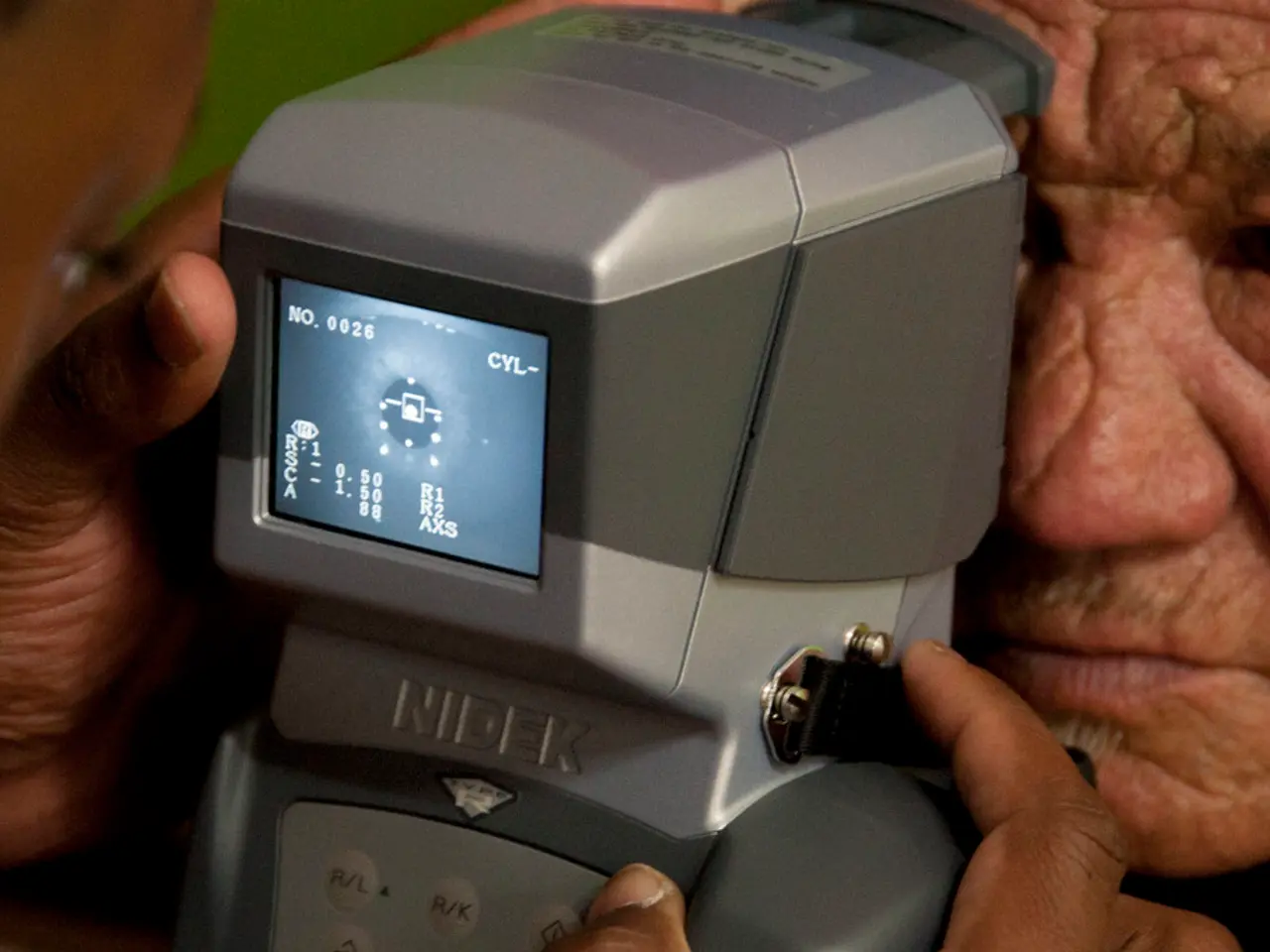Prevalence of Diabetic Eye Disease (Diabetic Retinopathy)
In the global fight against diabetes, one of the most pressing concerns is Diabetic Retinopathy (DR), a condition that affects millions of people with both type 1 and type 2 diabetes.
Approximately one-third of people with diabetes worldwide develop DR, with roughly one-tenth of these cases being vision-threatening [1][2][3]. This prevalence is on the rise, mirroring the global diabetes epidemic and aging populations [1][5].
While type 2 diabetes dominates the DR landscape due to its higher global incidence, type 1 diabetes patients also develop DR, typically after a longer diabetes duration [2][4].
In the early stages, DR may not show any symptoms, making regular eye exams crucial. Sadly, DR is the leading cause of vision loss in working-age adults [6].
The longer a person has diabetes, the higher the risk of developing DR. Factors that increase this risk include uncontrolled blood sugar levels, high cholesterol levels, high blood pressure, kidney disease, and smoking [7].
Regional variability exists, with certain regions such as East Asia, Western Europe, South Asia, and Southeast Asia reporting higher burdens of DR and related vision loss due to increasing diabetes prevalence [1][3].
A 2022 study found that an alarming 80% of people with diabetes have DR [8]. Treatment options for DR include medications, laser therapy, and vitrectomy surgery [9].
Diabetic retinopathy progresses through different stages, with proliferative diabetic retinopathy (PDR) involving the growth of new, abnormal blood vessels. In later stages, these new vessels may form, potentially leading to vision loss [9].
In the United States, diabetic retinopathy affects about 8 million people [6]. The changes to the retina's blood vessels can lead to vision loss. For instance, DR may cause the blood vessels in the retina to leak fluid, leading to swelling in the eye [9].
Managing diabetes is the best way to lower the risk of developing DR. This includes controlling blood sugar levels, regular exercise, a nutritional plan, treating high blood pressure, and regular eye exams [4].
While the prevalence and impact of DR are concerning, with over 71,000 DR-related blindness cases globally among adults aged 70 and older in 2021 [1], early detection and management can significantly reduce the risk of vision loss. Regular eye exams are crucial for those with diabetes to ensure timely diagnosis and treatment.
References:
- Diabetic Retinopathy: Global Public Health Concern
- The Epidemiology of Diabetic Retinopathy
- Prevalence and Trends of Diabetic Retinopathy among People with Diabetes: A Systematic Review and Meta-analysis
- Diabetic Retinopathy: Prevention, Early Detection, and Treatment
- Global Burden of Diabetic Retinopathy and Vision Loss: 1990 to 2021
- Diabetic Retinopathy: Facts, Statistics, and Information
- Risk Factors for Diabetic Retinopathy
- Prevalence of Diabetic Retinopathy in the US: Data from the National Health and Nutrition Examination Survey, 2015–2016
- Diabetic Retinopathy: Diagnosis and Treatment
- Roughly one-tenth of DR cases are vision-threatening, mirroring the global diabetes epidemic and aging populations.
- The higher global incidence of type 2 diabetes contributes significantly to the DR landscape.
- In its early stages, DR may not show any symptoms, making regular eye exams crucial for those with diabetes.
- Chronic kidney disease is a factor that increases the risk of developing DR.
- Regular exercise, a nutritional plan, and regular eye exams are key to managing diabetes and lowering the risk of developing DR.
- Factors that increase the risk of developing DR include uncontrolled blood sugar levels, high cholesterol levels, and smoking.
- Medications, laser therapy, and vitrectomy surgery are treatment options for DR.
- Proliferative diabetic retinopathy (PDR) involves the growth of new, abnormal blood vessels, potentially leading to vision loss.
- Managing chronic diseases like diabetes, including type-2 diabetes, is integral to maintaining eye health, skin care, mental health, and overall health and wellness.




